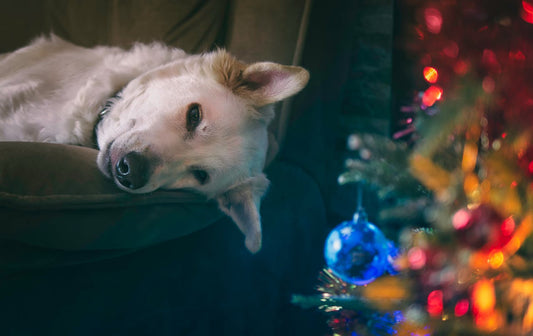As dog owners, we often find our furry companions in various sleeping positions. It's fascinating to observe the different ways dogs choose to rest and doze off. Beyond being adorable, these positions may provide insights into our dogs' personalities, comfort levels, and overall health. This article delves into the meaning behind six common dog sleeping positions.
Dogs, just like humans, have their own unique preferences when it comes to sleep. Some may curl up into a little ball, while others sprawl out with limbs reaching in every direction. These preferences may change depending on circumstances, the dog's age, or even their breed. Understanding the underlying reasons for these positions can help strengthen the bond between you and your pet.
In the following sections, we will explore the significance of each sleeping position, highlighting the factors that might influence your dog's choice and how it could potentially reflect their well-being. By the end of this article, you'll have gained a better understanding of your canine friend's behavior and what their preferred sleeping positions may reveal about them.
Understanding Dog Sleeping Positions
Just like humans, dogs have various sleeping positions that can provide insight into their emotions, comfort level, and even their personalities. By observing and understanding these positions, you can gain a deeper understanding of your dog's unique behavior.
The Fetal Position
The fetal position is a common sleeping position for dogs, where they curl up tightly with their tail wrapped around their body. This position can indicate several things, including:
- Comfort: Your dog may be in a deep sleep and feel at ease in their environment.
- Warmth: Dogs usually go for this sleeping position when they are trying to conserve warmth, especially when the temperature is low.
- Vulnerability: Sometimes, dogs choose to sleep curled up when they feel anxious or vulnerable in their surroundings.
The Side Sleeper
When a dog sleeps on their side with their legs stretched out, they generally feel secure and relaxed. This sleeping position indicates that your dog trusts you and their environment. Most dogs switch between the fetal position and the side sleeper throughout the night, as their comfort levels and surroundings change.
The Lion's Pose
The lion's pose sees a dog napping on their stomach with their legs out in front of them and their head resting on their paws. This pose represents relaxation, but it also allows your dog to be alert and prepared to take action if necessary.
The Superman Position
In the superman position, a dog lies flat on their stomach with their legs splayed out in a playful and relaxed manner. This position is common in puppies and energetic dogs, as it allows for a quick transition from sleep to play. It also helps dogs to regulate their body temperature on hot days.
The Belly Up
Dogs that sleep with their belly up and legs in the air may appear comical, but this position indicates trust and submission. Your dog feels completely comfortable in their environment, and it might be a sign that they are seeking attention or affection. However, this position can also help cool dogs down on warm days.
The Cuddle Bug
The cuddle bug position occurs when your dog curls up close to you or another pet, seeking warmth and safety. This position not only provides comfort but strengthens the bond you share with your canine companion.
By observing your dog's preferred sleeping positions, you can better understand their emotions and overall wellbeing. Adjustments to their sleep environment or routine may be necessary to ensure they feel comfortable, secure, and loved.
Interpreting Your Dog's Sleep Behavior
In order to understand what your dog's sleep behavior might indicate, it's helpful to first recognize common dog sleeping positions. Familiarize yourself with the following six positions:
- The Lion's Pose: Dog sleeps with head on its paws.
- The Belly Curl: Dog sleeps on its stomach with legs tightly tucked.
- The Cuddle Bug: Dog sleeps on its back with its head on a pillow.
- The Superman: Dog sleeps on its belly with legs stretched out.
- The Donut: Dog sleeps curled up in a tight ball.
- The Side Sleeper: Dog sleeps on its side with legs stretched out.
Now let's discuss what these six positions might suggest about your dog's health and well-being.
| Sleeping Position | Possible Indication |
|---|---|
| The Lion's Pose | Calm, relaxed state |
| The Belly Curl | Comfort & security |
| The Cuddle Bug | Warmth & nurturing |
| The Superman | Active, playful dog |
| The Donut | Anxiety, vulnerability |
| The Side Sleeper | Comfort & trust |
The Lion's Pose and The Side Sleeper often indicate a calm, relaxed dog. A dog that often uses these positions when sleeping is likely comfortable in their environment and trusts the people around them.
The Belly Curl and The Cuddle Bug, on the other hand, may suggest the desire for security and warmth. Dogs who sleep in these positions might seek extra affection or reassurance, especially in unfamiliar settings.
When a dog sleeps in The Superman position, it's often a sign of an active, playful dog. These dogs may be ready to jump back into action when they wake up, always on standby for a game or a walk.
Lastly, The Donut can indicate anxiety or vulnerability. If a dog consistently sleeps in this position, it may be worth considering if there are any stressors in the environment causing them discomfort or fear.
It's essential to observe your dog's sleep behavior over time to recognize patterns and understand what their preferred sleeping positions might indicate. Remember that every dog is different, and some might switch between positions regularly, while others have a clear preference for one specific position. Keeping an eye on your dog's sleep behavior can provide valuable insights into their well-being and overall happiness.

























